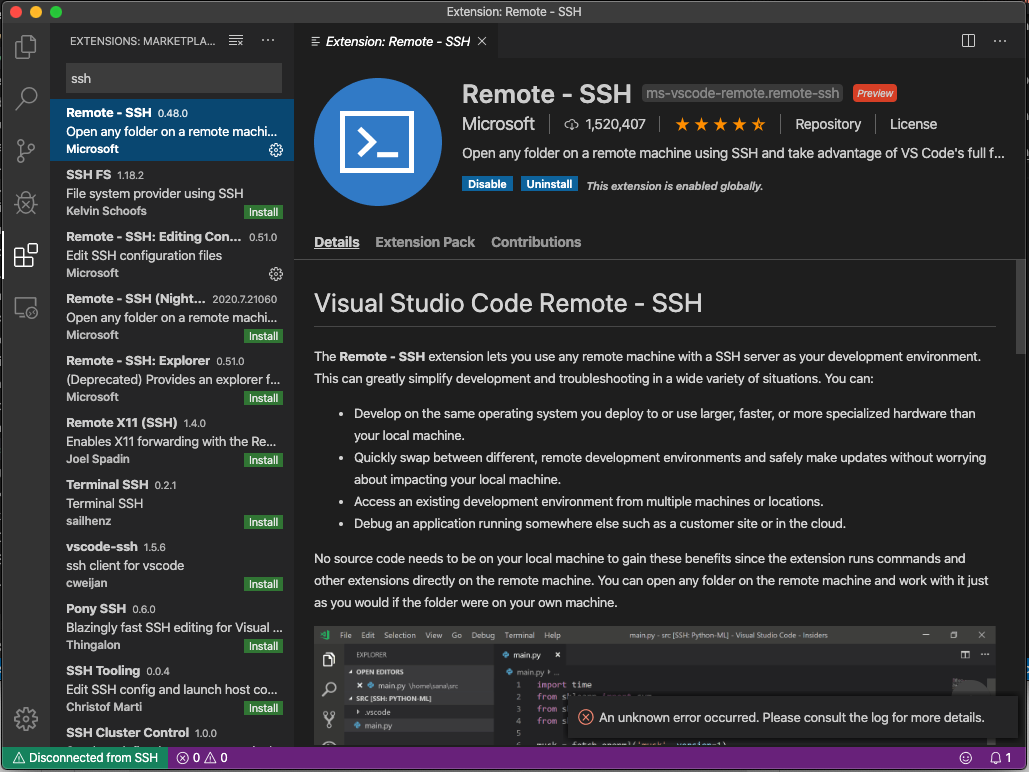
You can set it to whatever, including ~/path. By default, the button/command opens ssh://hetzner/ which would then mount /root, as that is what my Root config field is set to. I actually opened ssh://hetzner/ng-ui as my folder, which resolves to /root/ng-ui on my remote server. This works seamlessly with extensions using the API (added in VS Code 1.37.0), although not all extensions switched over, especially ones making use of binary files.Īs can be seen, right-clicking a remote directory gives the option to instantly open a remote terminal in this directory. Same configuration used as from the Config editor above.

Using a simple button or the command palette, we can mount a remote workspace folder as a regular local workspace folder: The task terminal opens a full PTY terminal on the server. Remote shell tasksĪ new task type ssh-shell is added to run shell commands remotely: As long as the configuration hasn't changed, existing connections (both for workspace folders and terminals) will be reused. If a connection is already opened for a configuration, there is no need to reauthenticate. A config option exists to change this, e.g. Uses $SHELL by default to launch your default user shell. Using a simple button or the command palette, a remote terminal can be started: The workspace versions do have higher priority for merging or ignoring duplicates. Even when the workspace overrides this setting, the globally-configured paths will still be read. It also specifies that all file operations ( ssh://hetzner/some/file.js) are relative to the /root directory on the server.Ĭonfigurations are read from your global User Settings, the current workspace's settings, and any JSON files configured with nfigpaths.


Due to me having loaded my private key in Pageant (PuTTY's agent), this config allows me to create a connection without having to provide a password/passphrase. This config is configured to copy settings (e.g.

The config editors stores this, by default, in your User Settings ( settings.json) as: "nfigs": [ The built-in config editor makes it easy to create and edit configurations: This extension allows mounting remote folders as local workspace folders, launch integrated remote terminals and run ssh-shell tasks.


 0 kommentar(er)
0 kommentar(er)
